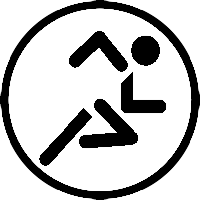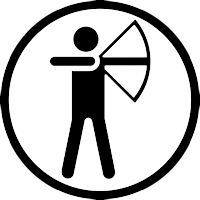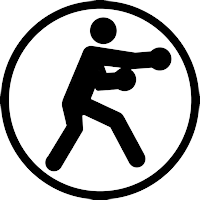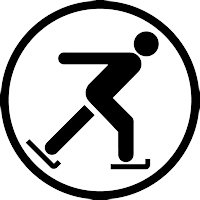And you don't have to necessarily buy them in a store. You could just make your own.
- Boxing Gloves: Padded gloves worn on the hands for protection and striking during training and sparring sessions.
- Hand Wraps: Elastic or cloth wraps worn around the hands and wrists to provide support, stability, and protection against injuries.
- Punching Bag: Heavy bag filled with sand, fabric, or other materials, used for practicing punching, kicking, and striking techniques.
- Speed Bag: Small, air-filled bag attached to a rebound platform, used for improving hand-eye coordination, rhythm, and speed.
- Double-End Bag: Small, air-filled bag suspended from both the ceiling and the floor, used for developing timing, accuracy, and reflexes.
- Focus Mitts/Pad: Padded targets held by a coach or training partner, used for practicing combinations, accuracy, and power punches.
- Thai Pads/Kicking Shields: Thick, padded targets held by a coach or training partner, used for practicing kicks, knees, and elbow strikes.
- Medicine Ball: Weighted ball used for strength training, core exercises, and dynamic movements to improve power and explosiveness.
- Jump Rope: Cardiovascular exercise tool used for improving footwork, agility, coordination, and endurance.
- Headgear: Protective gear worn on the head and face to reduce the risk of cuts, bruises, and concussions during sparring sessions.
- Mouthguard: Moldable mouthpiece worn over the teeth to protect against dental injuries and absorb impact during training and competition.
- Boxing Shoes: Lightweight, high-top shoes with ankle support and a non-slip sole for traction and mobility in the ring.
- Boxing Ring Timer: Electronic timer used to track round durations, rest intervals, and workout sessions during boxing training.
- Heavy Bag Gloves: Padded gloves with wrist support and extra padding for hitting heavy bags with greater force and impact.
- Boxing Hand Pads: Padded mitts worn on the hands for catching and blocking punches during partner drills and pad work.
- Boxing Groin Protector: Protective cup worn by male boxers to shield the groin area from impact and reduce the risk of injury.
- Boxing Timer App: Smartphone or tablet application with customizable round lengths, rest intervals, and audio cues for timing boxing workouts.
- Reflex Ball: Ball attached to an elastic band or headband, used for improving hand-eye coordination, reaction time, and accuracy.
- Boxing Tape: Adhesive tape used to secure hand wraps, protect skin, and provide additional support to joints and injuries.
- Body Protector: Padded vest worn by coaches or training partners to absorb punches and body shots during sparring sessions.
- Boxing Ring/Cage: Enclosed space with ropes or barriers, used for sparring, training, and competitive bouts in boxing gyms and arenas.
- Boxing Target Stick: Long, padded stick with targets or pads on each end, used for practicing striking and defensive techniques.
- Speed and Agility Ladder: Flat ladder-like device placed on the floor for footwork drills, agility training, and improving coordination.
- Boxing Mitts Stabilizer: Adjustable strap or hook-and-loop closure system used to secure focus mitts and prevent them from shifting during pad work.
- Boxing Water Bottle: Portable, reusable bottle for staying hydrated during boxing workouts, training sessions, and competitions.























